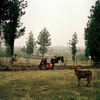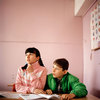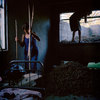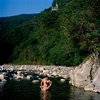A Conversation with Ivor Prickett
MORE IMAGES
All I know is that if you speak to other photographers, from my generation […] they are not going on about how everything is doomed, they are excited and enthused by the stories that they want to do. We never had the chance to experience what things were like before and perhaps this is a blessing as it allows us to be blissfully unaware and simply get on with our work without yearning nostalgically for the past.
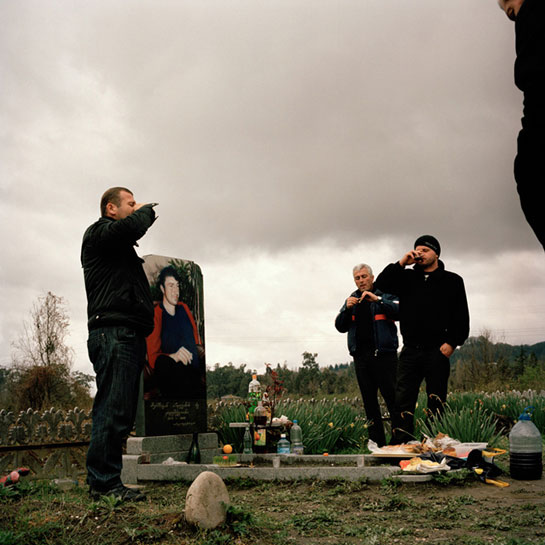
A little while ago, Benjamin of duckrabbit fame sent me an email, telling me about Ivor Prickett and his story about Abkhazia. I like Ivor’s work very much, and since there currently is so much talk about how photojournalism is presumably dead (or maybe not) and about the relationship between photojournalism, documentary photography and what we call “fine art” photography (for a lack of a better term), I approached him to talk about his work. (more)
Jörg Colberg: Seeing the diversity in your projects brings up my first question quite naturally: How do you find the topics you want to cover?
Ivor Prickett: Of course each project is different but usually it is just an initial spark that sets off an interest in a region or a particular topic that will then lead me to discover the specific story that I end up doing. I find it very hard to sit down and force myself to come up with a good project. Usually my ideas come when I am least expecting them and never when I am putting lots of pressure on myself to come up with something. So I have certain themes and topics that I am interested in and of course this helps but there is not one place you can go to find a great story along these lines. Sometimes it is quite straightforward, an amazing article you read may be enough to convince you that you have to do something. While other projects have been the result of lots of research and learning about a certain place or issue. And very often you will find a better story than the one you have set out to do once you are on the ground working. So I think the key for me is be very open and try not to force things too much. As long as your eyes and ears are open you will find something.
JC: Once you’ve picked a topic, how do you prepare? How do you go about shooting? Do you pre-plan things, or do you let things develop organically?
IP: When I have come up with a project I will prepare by doing as much research as possible so that I am clear on the facts and history behind the situation that I will be attempting to document. This research is also integral to helping you formulate an idea of how the story is going to work visually, but of course most of your preconceived ideas are quickly blown out of the water the minute you actually start shooting. So, as much as I might pre-plan I have learnt, in fact I am still learning to let things, as you said, develop organically and work with what I find.
JC: How does this work in countries where you have to rely on interpreters? Is working under that condition different, maybe harder? Do you have to worry about maybe not getting shown some things because you can’t directly ask for them?
IP: Yes this is always a worry and difficulty. You are at the mercy of your fixer, and if he or she tells you that you cant do something there isn’t much else you can do if you don’t speak the local language. What I have learnt though is that in the same way that you have to gain the trust of the people you are photographing you also have to forge a relationship based on trust and understanding with your fixer/interpreter. I find it helps to slowly build towards doing the more challenging aspects of a story rather than turning up and demanding to see and photograph the most sensitive issues in town.
JC: What’s your view on the general state of photojournalistic/documentary storytelling these days? There’s a lot of talk about the business side, but much less about the photography side. Is photojournalism dead? If so who will fill that gap?
IP: I don’t think photojournalism is dead but it has obviously changed immensely. The main difference seems to be that the lines between photojournalism, documentary and fine art have been blurred. So instead of needing to replace photojournalism I think what photographers and the people who buy photographs have had to do is to allow this morphing of genres and styles to fill any gaps that appeared. What is kind of misleading as well is that because there is less and less space for such photography in traditional magazine layouts people seem to presume that the work is not being made and photojournalism, as a privileged few used to know it, is therefore dead. However, as a result of this lack of editorial space, documentary photographers and photojournalists have had to look for other ways to fund their work, ways that are perhaps more geared towards long-term projects. There are so many grants and funds available these days that people are working on huge personal projects that they have full creative control over and are under no pressure to publish. This is only a good thing and I think as result of the environment we find ourselves in there are some amazing young photographers who are pushing the boundaries and shaping the genre into something far more expressive and wide ranging than perhaps it once was.
JC: I’m curious why things are usually presented in such negative terms, instead of in the very positive terms you use. Is this a case of an older generation dominating the debate while a young generation, your generation is quietly shaping things in completely new - or at least expanded - ways?
IP: Yes I think it is a case of the negativity and doomsday verdicts coming from an older generation, perhaps we don’t have the opportunity to speak out enough because we are still only emerging. But all I know is that if you speak to other photographers, from my generation, who are interested in photojournalism and documentary, they are not going on about how everything is doomed, they are excited and enthused by the stories that they want to do. We never had the chance to experience what things were like before and perhaps this is a blessing as it allows us to be blissfully unaware and simply get on with our work without yearning nostalgically for the past.
JC: This might be a stupid question, but maybe there’s something to be gained from being stupid. In this day and age, where photographs are so ubiquitous, and where many people are so cynical about photos, how does one make people care about what’s being shown in photographs? So that, just to make that connection, the photographs will have an impact?
IP: I’m not really sure how other photographers go about doing this, but for me I try to engage viewers by photographing the very ordinary every-day routines that people living in extraordinary circumstances still have to go through in order to survive. By presenting people with situations and emotions that they can relate to I hope to draw them in and allow them to put themselves in my subjects’ shoes, no matter how foreign or exotic their lives may be. So instead of trying to shock someone into caring, I am hoping to communicate people’s stories in a more subtle and engaging way.
JC: This seems to require a lot of visual work, though, doesn’t it? A shocking picture will have everybody’s attention, whereas something more subtle asks the viewer to spend time. Do people have the time (and interest)?
IP: I think people are perhaps tired and switched off to seeing only shocking images, and while photographers may grumble that this is down to compassion fatigue, I think it is sometimes photographers who are suffering from a lack of empathy and are simply churning out images with very little emotion imbued in them. So, while I think there is still a need for these pictures, I also think there are people who do have the time and will respond to something different, something more emotive rather than simply graphically shocking.
 By
By 